Welcome to the Commonwealth War Graves Commission
Tower Hill Memorial - First World War
[Logo of CWGC]
CWGC
Commonwealth War Graves Commission
The CWGC commemorates the dead of British and Commonwealth forces of the two World Wars at cemeteries and memorials in over 150 countries.
The Tower Hill Memorial bears the names of 12,000 First World War merchant seamen who have no known grave, their bodies lost or buried at sea. It was unveiled by Queen Mary on 12 December 1928.
The sailors of the Merchant Marine served across the globe, transporting civilian and military supplies that were vital to the war effort. By the end of the conflict more than 3,300 merchant ships had been sunk, and over 17,000 merchant sailors had lost their lives.
[Map of the First World War memorial, and the Second World War extension]
[Timeline]
1914 (August) Outbreak of the First World War
1914 (August) S.D. Barley Rig first vessel sunk by enemy action
1915 (February) German campaign of unrestricted U-Boat warfare begins
1915 (February) R.M.S. Lusitania sank. 352 named killed
1915 (August) S.S. Royal Edward sunk. 127 named here
1917 (February) Second period of German unrestricted U-Boat warfare begins
1917 (May) Creation of the Imperial (now Commonwealth) War Graves Commission
1917 (July) S.S. Eloby sunk. 55 named here
1918 (June) H.M.H.S. Llandovery Castle sunk. 145 named here
1918 (November) End of First World War
1928 King George V grants title of Merchant Navy to the Merchant Marine
1928 (December) Tower Hill Memorial unveiled
Lusitania The largest loss of life commemorated upon the memorial is from the sinking of the R.M.S. Lusitania. On 7 May 1915, the Lusitania was torpedoed by a German submarine in the Irish Sea. Carrying almost 2,000 passengers and crew, she sank in under 20 minutes. Commemorated here are more than 350 service personnel who died in the sinking.
[Picture of Lusitania]
R.M.S. Lusitania
© Merchant Navy Association
Design The Tower Hill Memorial was designed by Sir Edwin Lutyens with sculpture by Sir William Reid-Dick. It takes the form of a vaulted corridor and is made from portland stone. A famous architect before the First World War, Lutyens designed many memorials, including the Cenotaph in Whitehall and the CWGC Thiepval Memorial on the Somme, in France.
[Image of Sir Edwin Lutyens]
Sir Edwin Lutyens
© CWGC
The CWGC Established in 1917, the War Graves Commission commemorates more than 1.7 million dead of the two World Wars, Our founding principles are to commemorate each person equally, regardless of race, rank, or religich, and to do so forever.
[picture]
Unveiling of the Tower Hill Memorial, 1928
© CWGC
Stay connected For more information about the Commonwealth War Graves Commission, or to search our records online, visit:
www.cwgc.org 
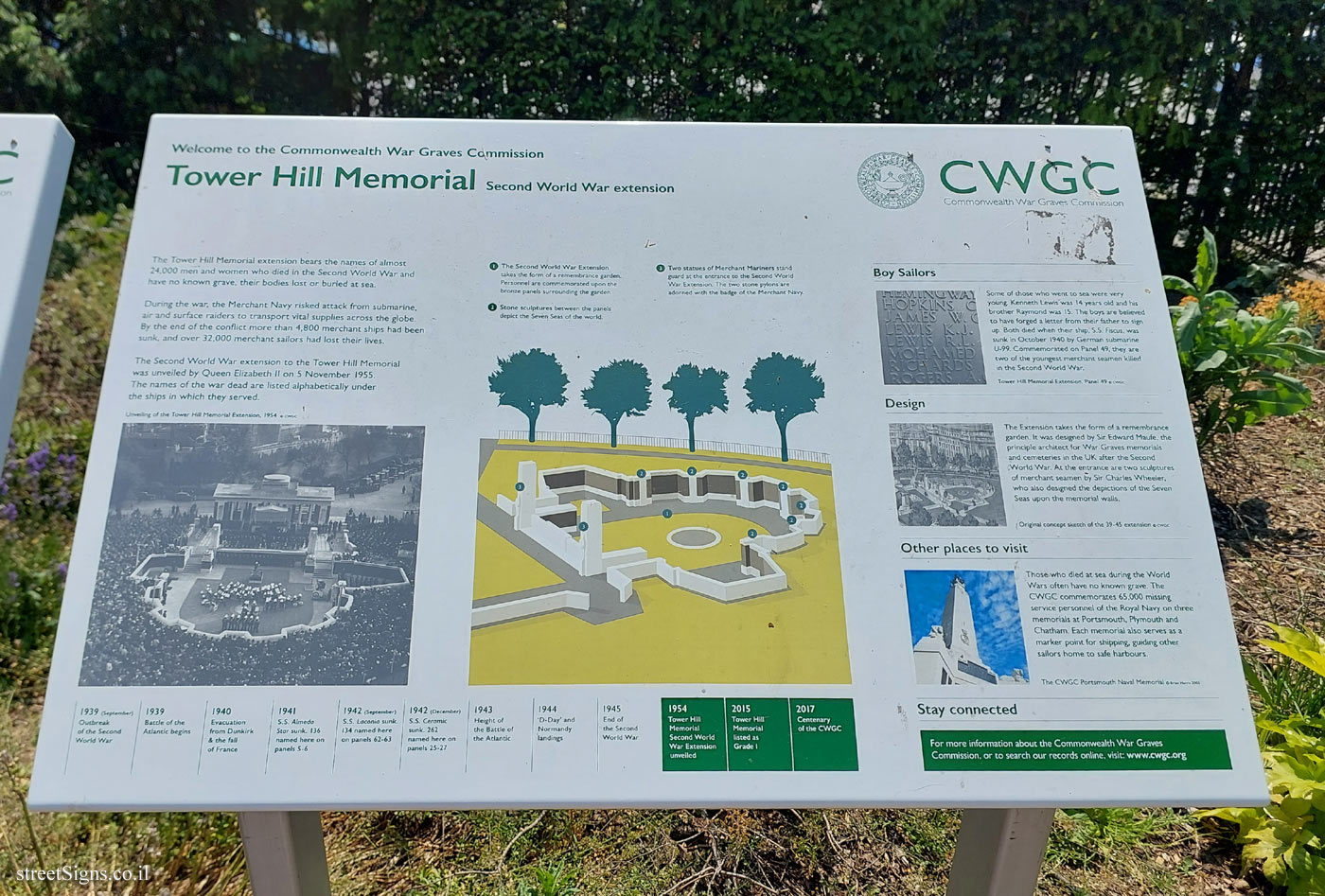 Click for sign's details
Click for sign's details 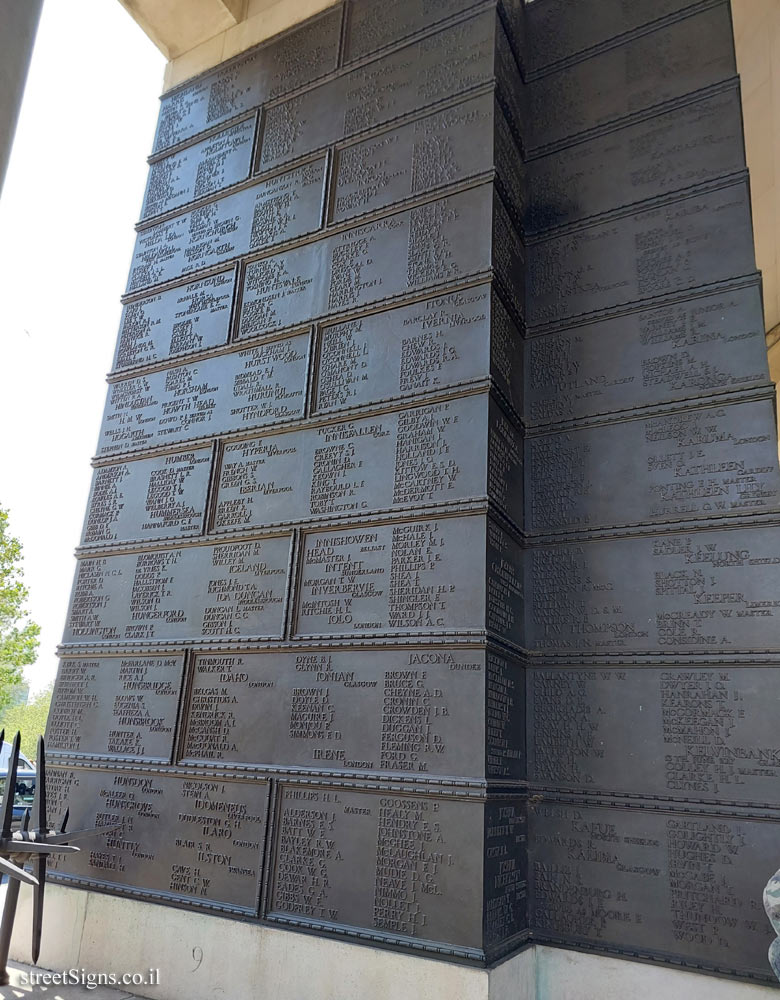 Click for a larger image
Click for a larger image 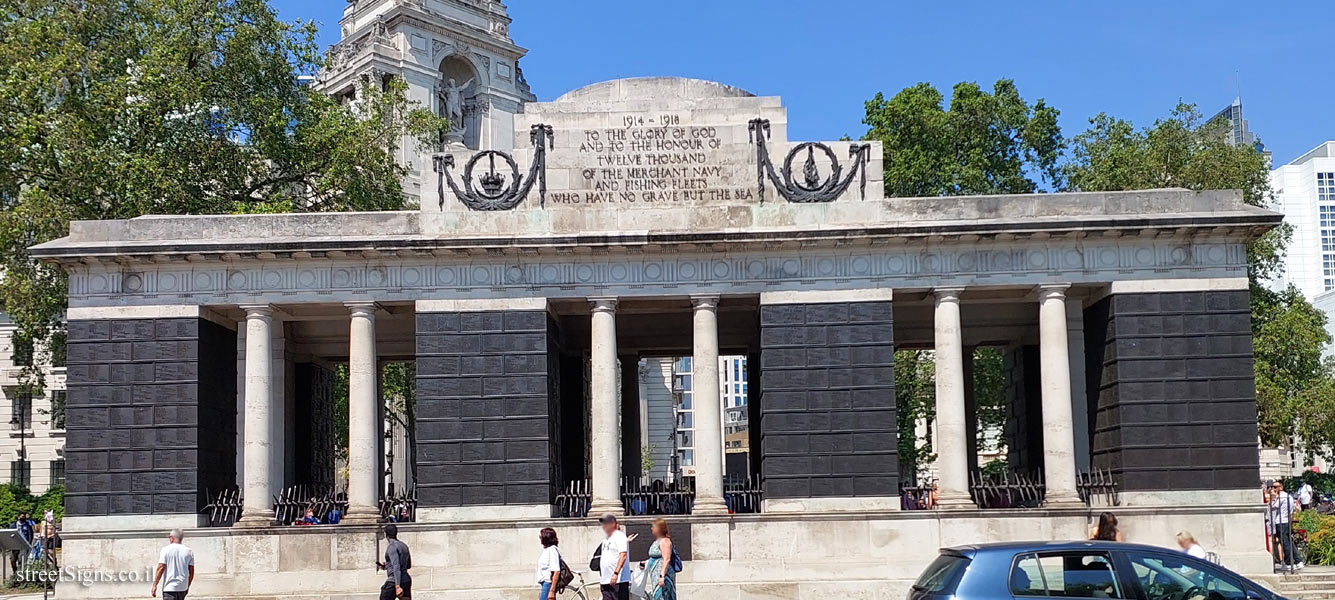 Click for a larger image
Click for a larger image 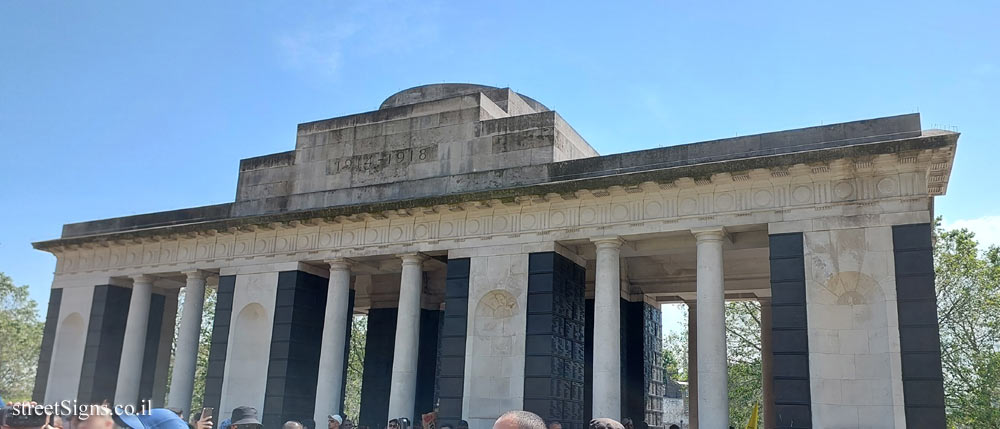 Click for a larger image
Click for a larger image 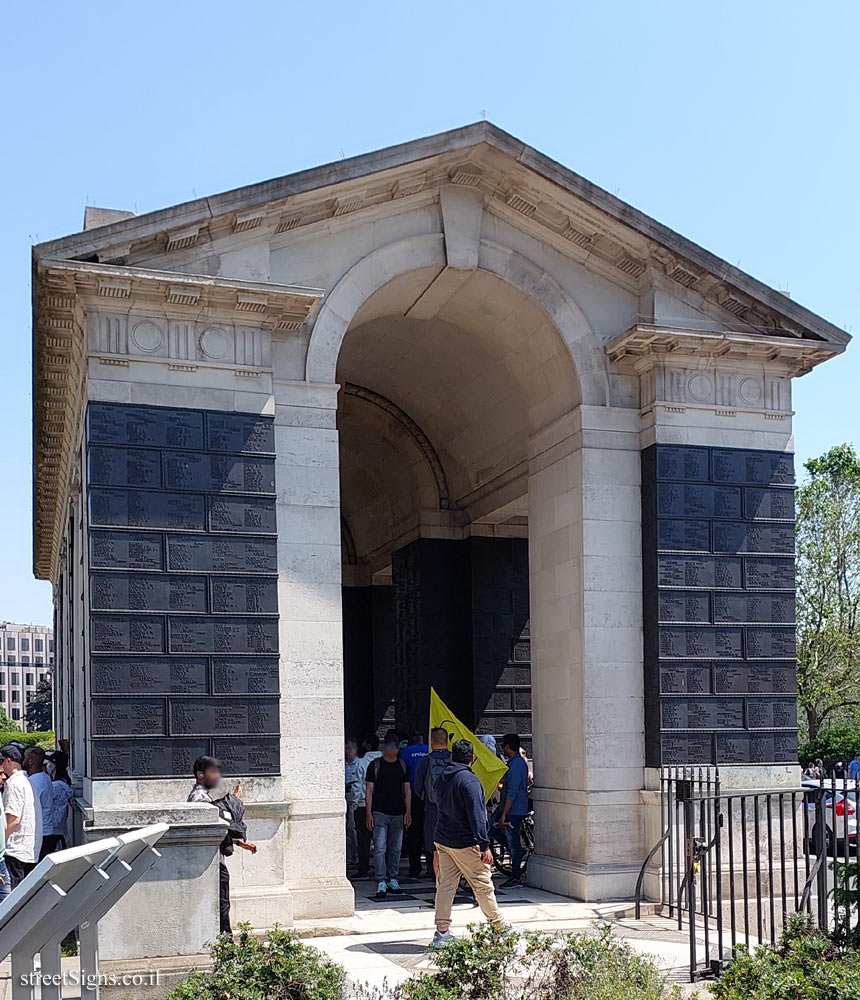 Click for a larger image
Click for a larger image 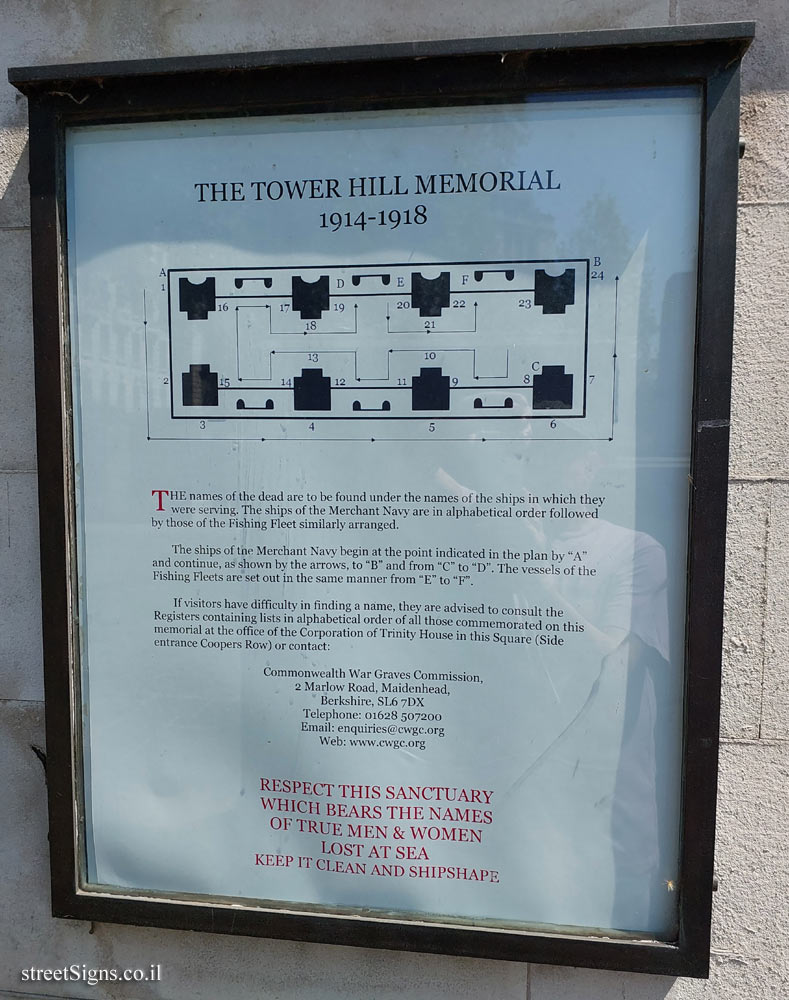 Click for a larger image
Click for a larger image  Click for sign's details
Click for sign's details